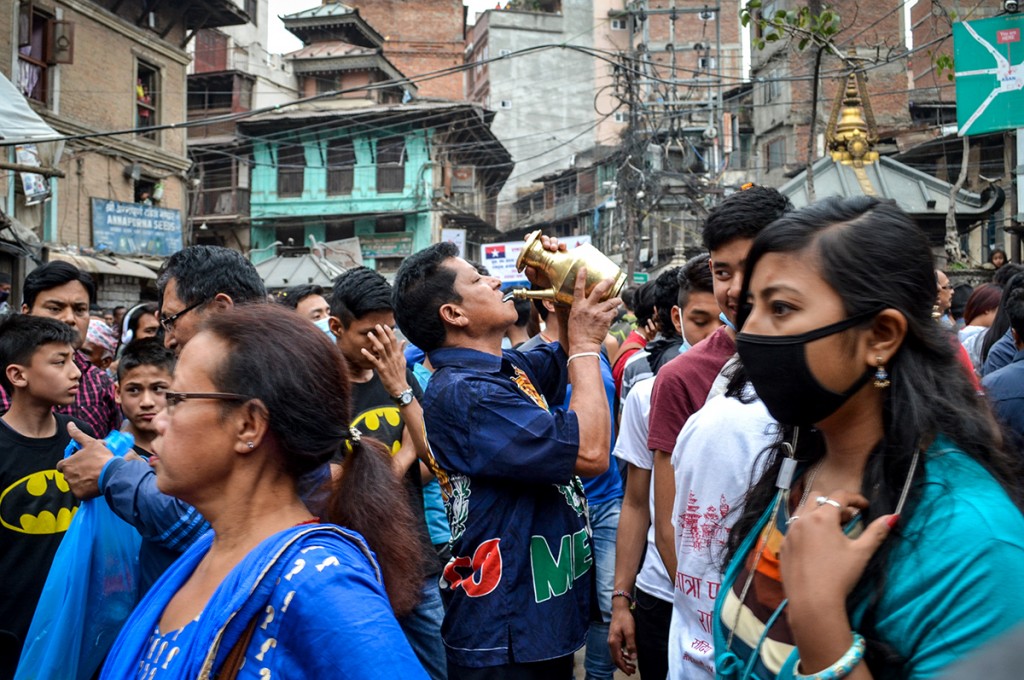
Shilu Manandhar, GPJ Nepal
People who are of the Newar community’s Maharjan caste begin building the Seto Machhendranath chariot days before the start of the festival, during which the chariot is paraded through Kathmandu. About 40 people work for a week to construct the vehicle, says Tirtha Majarjan.
KATHMANDU, NEPAL — Sections of this capital city were filled with people in early April as the annual three-day Seto Machhendranath festival showcased a hand-built, sky-scraping chariot and plentiful opportunities for devotees of the god to engage in worship.
“Seto Machhendranath blesses and protects people who are in heaven, earth and hell,” says Buddha Ratna Shakya, a Buddhist priest.
A chariot, the focal point of the celebration, is built each year by people from the Maharjan caste of the Newar group. It takes about a week for 40 people to build the chariot, says Tirtha Maharjan.
Once the chariot is complete, a priest, in a ceremonial procession, brings the deity from Jan Bahal, the area that is home to the temple of Seto Machhendranath, and places it inside the chariot. Guards from Kathmandu’s historic palace complex escort the priest.
The chariot is then pulled through the area’s narrow streets to Kathmandu’s Ason area, where narrow, zig-zagging streets filled with houseware shops meet in a central square. The next day, the chariot is taken to Hanuman Dhoka, a UNESCO World Heritage site with historic palaces and temples. On the festival’s third day, the chariot goes to Lagan, another area with temples and markets.
This year, the festival began on April 4. Devotees came to Ason on the first day to light butter lamps and be blessed by priests. Both Buddhists and Hindus worship Seto Machhendranath.
The festival brings big business to shop owners in the areas where the chariot travels. Sunita Tuladhar, with her family, has a store that sells items for religious ceremonies known as pujas. But more than making money, she enjoys being so close to the action during the festival.
“We pray and do pujas,” she says. “We light butter lamps. We can also see all the process of the festival. The pulling of the chariot is fun.”
Shilu Manandhar, GPJ reporter, translated interviews from Nepali.
















